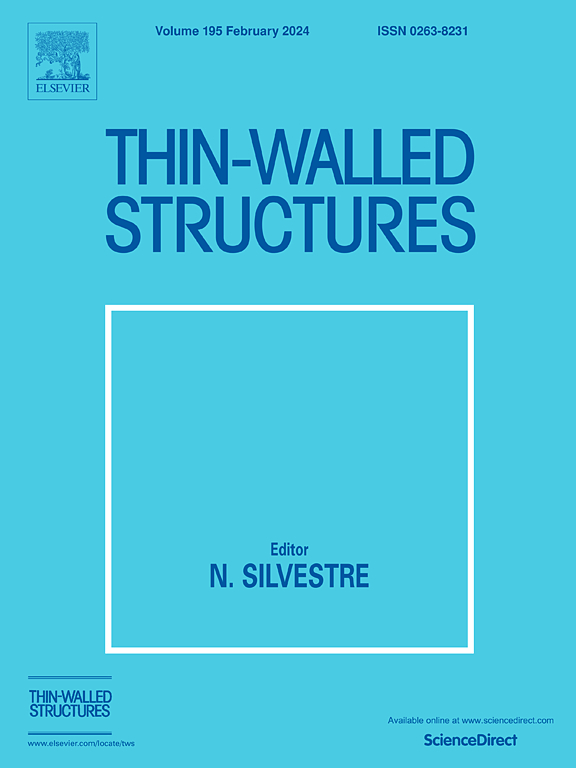Effect of weave pattern on the low-velocity impact properties of 3D woven composites
IF 5.7
1区 工程技术
Q1 ENGINEERING, CIVIL
引用次数: 0
Abstract
In this study, three distinct 3D layer-to-layer interlock (LTL) woven composites characterized by Twill Structure (TS), Satin Structure (SS), and Stuffer Twill Structure (STS) were fabricated. These composites' low-velocity impact (LVI) resistance was evaluated using a drop-weight impact test. The macroscopic mechanical behavior of the composites under LVI was analyzed to understand the effects of yarn interweaving. Furthermore, the impact damage mechanisms were examined using 3D profilometer and micro-computed tomography (CT) inspection. The results indicate that the increased floating threads in the SS binder yarns led to an 11.72 % increase in Matrix crushing load, a 6.82 % rise in peak load, and an 11.51 % reduction in absorbed elastic energy compared to the TS. The incorporation of stuffer yarns in the STS increased the Hertzian failure load by 16.51 %, reduced the sustained contact time by 19.53 %, and decreased the maximum displacement by 17.32 % relative to the TS. The TS exhibited excellent impact resistance due to its dense yarn interweaving, which effectively dispersed the impact load. In contrast, the SS, with its longer floating threads and fewer interweaving points, facilitated energy dissipation but was more prone to stress concentration. The addition of stuffer yarns in the STS significantly improved interlaminar bonding and overall impact resistance, particularly regarding interlaminar shear strength and energy absorption efficiency.
求助全文
约1分钟内获得全文
求助全文
来源期刊

Thin-Walled Structures
工程技术-工程:土木
CiteScore
9.60
自引率
20.30%
发文量
801
审稿时长
66 days
期刊介绍:
Thin-walled structures comprises an important and growing proportion of engineering construction with areas of application becoming increasingly diverse, ranging from aircraft, bridges, ships and oil rigs to storage vessels, industrial buildings and warehouses.
Many factors, including cost and weight economy, new materials and processes and the growth of powerful methods of analysis have contributed to this growth, and led to the need for a journal which concentrates specifically on structures in which problems arise due to the thinness of the walls. This field includes cold– formed sections, plate and shell structures, reinforced plastics structures and aluminium structures, and is of importance in many branches of engineering.
The primary criterion for consideration of papers in Thin–Walled Structures is that they must be concerned with thin–walled structures or the basic problems inherent in thin–walled structures. Provided this criterion is satisfied no restriction is placed on the type of construction, material or field of application. Papers on theory, experiment, design, etc., are published and it is expected that many papers will contain aspects of all three.
 求助内容:
求助内容: 应助结果提醒方式:
应助结果提醒方式:


